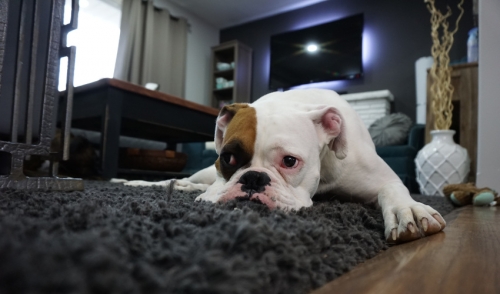{article.name}
Treating Seasonal Hot Spots on Pets

- Share this:
- Share on Facebook
- Pin on Pinterest
- Tweet on Twitter
Hot spots can be uncomfortable for your pet, but how can you treat this itchy irritation? Understanding more about hot spots can help you give your pet relief whenever these sores flare up.
What Are Hot Spots?
Hot spots are bacterial skin infections that cause severe itching, so much that an inflamed, moist sore spot develops at the site of the infection. As your pet desperately seeks relief by itching, rubbing, licking or even chewing repeatedly on the same spot, the sore can progress to show hair loss, scabbing or oozing. These sores most frequently occur on the head, neck, hips or limbs, and are more common in summer when temperatures are naturally higher and there is greater humidity, both conditions that can aggravate hot spots. Pets with severe hot spots may show more aggression than normal, especially when the spot is agitated by accidental contact. Depending on the severity of the infection and your pet's reaction, a hot spot can develop in just a few minutes or may take several days to fully inflame. Regardless of the cause or development, however, it can be a very uncomfortable condition for your pet.
Hot Spot Causes
Many different things can cause hot spots. Generally, a small scratch or lesion in the skin is the first step, and when that spot harbors bacteria and the body's immune response tries to eliminate the infection, the hot spot will grow. Your pet's reaction, while they are only seeking relief from the itching, will aggravate the condition to an unbearable level. The initial scratch and infection could come from…
- Flea or other insect bites, particularly if the pet has an allergic reaction
- Allergens that impact the skin, such as pollen, perfumes or detergents
- Splinters or thorns that get lodged beneath the skin
- Stress, boredom or anxiety that drives a pet to uncontrolled itching
- Food allergies that cause dry or itchy skin
- Matted fur that can create hot spot conditions in one area
Depending on the cause, hot spots can be seasonal because environmental conditions make them easier to grow. If a pet's hot spots are caused by pollen and allergic skin reactions, for example, the sores are more likely to develop only when seasonal pollen counts are high. Flea or insect bites that create hot spots are more likely in spring and summer, when pests are more numerous and bites are more frequent. Regardless of the cause, however, proper diagnosis of the initial irritation is essential to ensure the appropriate treatment. If your pet develops hot spots, a veterinary visit will help determine the cause and most effective options to relieve your pet's discomfort.
Treating Seasonal Hot Spots
Once the cause of hot spots has been diagnosed, not only can the initial irritant be treated, but there are additional treatments to alleviate the itching and help your pet be more comfortable. Furthermore, some changes in how you care for your pet can easily minimize the risk of developing hot spots and make any existing sores more manageable. Treatment for seasonal hot spots on pets may include…
- Injected, oral or topical antibiotics, usually a 2-4 week course of medication
- Medicated baths or gently cleaning the sore areas with topical antiseptics
- Proper grooming to remove hair mats and promote good air circulation to the skin
- Antihistamine prescriptions to lessen the body's immune response to allergens
- A healthy diet with omega-3 oils to promote healthy skin that resists infections
- Cleaning the pet's environment, including bedding, toys and flooring to remove irritants
- Reducing stress and anxiety by exercising more or bonding with your pet
With proper diagnosis and appropriate care to minimize the risk of these itchy infections, you can easily treat seasonal hot spots on your pets and make sure they aren't subject to these uncomfortable sores.
Special Offers
We are constantly adding new specials to our site. Be sure to check back often!



Comments